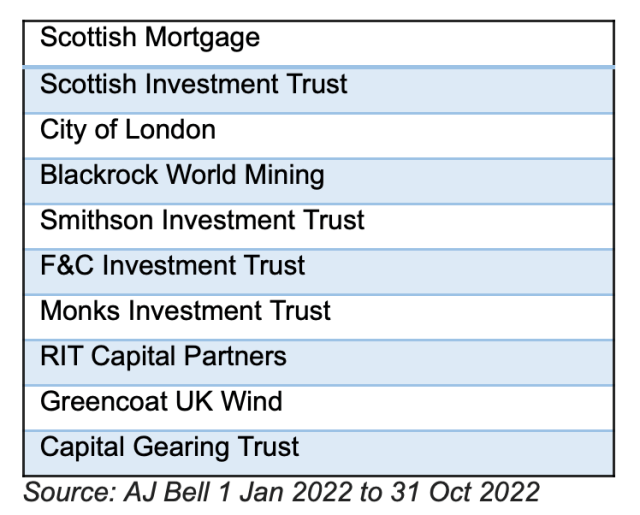As a unique feature of investment trusts, investment trust shares can trade at a premium or discount to the value of the portfolio’s underlying investments – a factor driven by investor demand. According to data from investment trust trade body the Association of Investment Companies (AIC), risk aversion amongst investors means 37 out of the 38 investment trust sectors are currently trading at a discount. So what does this mean for DIY investors: basement bargain or keep well away?
What are premiums and discounts?
Unlike open-ended funds such as unit trusts, investment trusts have share prices that can deviate from the value of their underlying investments (the net asset value or NAV). It means investment trust share prices can either fall to a discount to the NAV, or rise to a premium above them. Premiums and discounts can be a little confusing, but changes in how wide a discount or premium becomes can serve to detract from or enhance your returns outside of the movement in value of the underlying investments.
For example, the value of the portfolio’s investments may have risen 5% over a certain period, but the discount on the shares might have also narrowed as well from -10% to -5%, which means your return over that period would be 10%. Of course, it can swing both ways.
What’s going on with discounts across investment trust sectors at the moment?
Currently, almost all of the AIC sectors have fallen into a discount, with the average across all investment trust sectors increasing from -3.6% on 31st December 2021, to -14.3% on 18th November 2022.
Below highlights the movement in discounts across various sectors for shares, with the widest discount first.

What affects premiums and discounts?
Broad investor sentiment plays a big part. At the moment, economic growth is currently being impacted by high inflation and rising interest rates, and geopolitical uncertainties are high on account of Russia’s horrid war on Ukraine. It means sentiment amongst investors is quite negative, and is why discounts have widened more broadly across sectors.
But it’s important to remember that more specific factors play a part too. Some trusts may invest in certain markets or assets that mean its shares permanently trade at a discount, for example if the assets are more illiquid and trickier to trade. It’s why it’s important when investing to look at where the current discount lies relative to its history.
Does it mean I should be investing in investment trusts right now?
Warren Buffett has often talked of needing to be greedy when others are fearful, which means the more Teflon-coated investors out there might see this as a time to top-up their investments.
Annabel Brodie-Smith, communications director at the AIC, remarks: “Discounts are currently wider than usual and this can present buying opportunities. However, investors need to consider whether an investment company’s strategy meets their objectives. They also need to take into account other factors such as the investment company’s performance record, charges and gearing. If investors are in any doubt, they should speak to a financial adviser.”
Laith Khalaf, head of investment analysis at AJ Bell, adds: “Buying an investment trust on a hefty discount can be an extra kicker of return for investors, but the market and the portfolio will be the key drivers of returns, so investors should pay attention to a trust’s performance and investment philosophy when doing their research, as well as the annual charges levied. Given the forthcoming cuts to dividend tax and capital gains tax allowances, investors should also seek to wrap their investment trusts within a SIPP or ISA wrapper where possible.”
Which investment trusts are popular with DIY investors?
See below – AJ Bell has given Steps their top selling ten investment trusts on their platform in the ten months to the end of October, beginning with the most popular.
